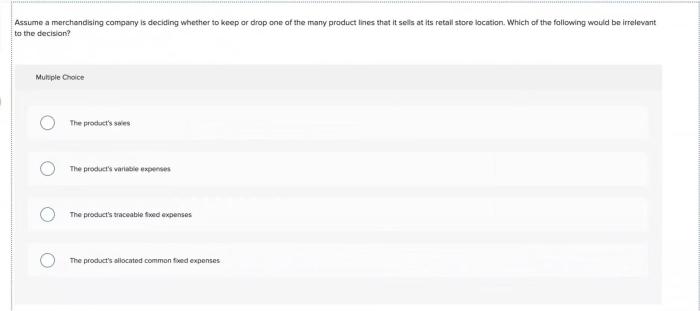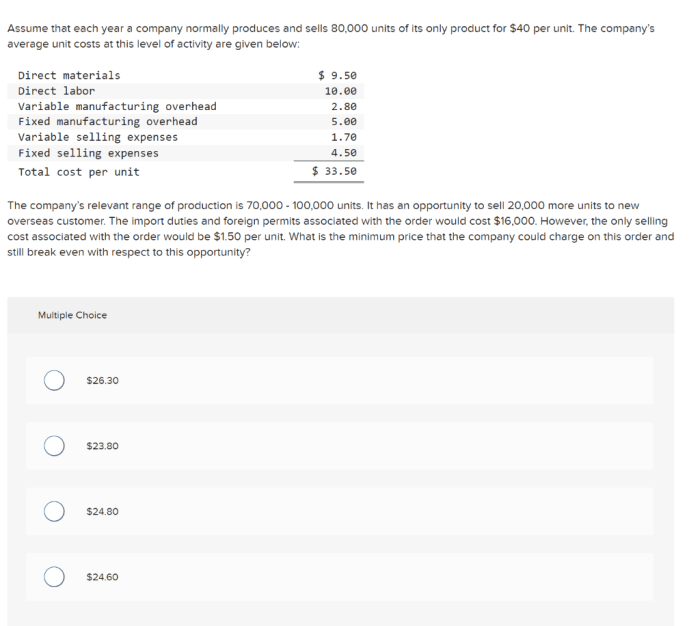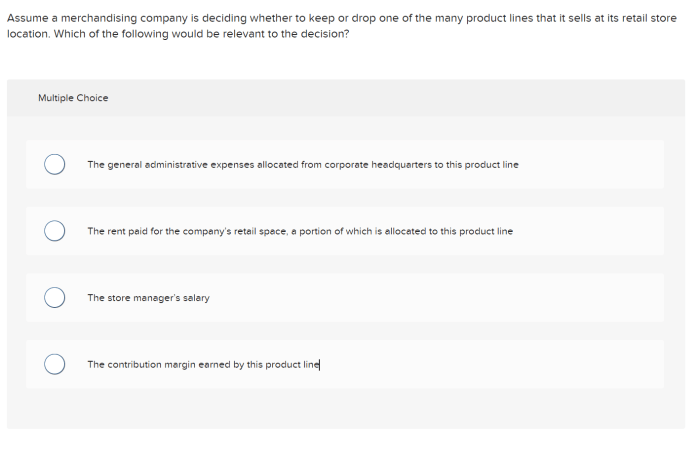Assume a merchandising company is deciding to venture into uncharted territories. This comprehensive guide unveils the intricacies of product line expansion, target market identification, pricing strategy development, distribution channel selection, marketing and promotion planning, inventory management, and customer service strategy.
Prepare to delve into a world of strategic decision-making, unlocking the secrets to merchandising success.
Product Line Expansion

Product line expansion is a strategy used by merchandising companies to increase their product offerings and reach new customers. There are several factors to consider when expanding a product line, including:
- Target market: Identifying the target market for the new product line is essential to ensure that it meets the needs and wants of the customers.
- Competition: Researching the competition and understanding their product offerings and strategies can help companies differentiate their new product line.
- Resources: Expanding a product line requires resources such as capital, manufacturing capabilities, and marketing support.
Examples of successful product line expansions include:
- Apple’s expansion from computers to smartphones and tablets.
- Nike’s expansion from athletic shoes to clothing and accessories.
Potential risks and benefits of expanding a product line include:
- Risks: Cannibalization of existing products, increased competition, and failure to meet customer expectations.
- Benefits: Increased revenue, diversification of product offerings, and improved customer loyalty.
Target Market Identification: Assume A Merchandising Company Is Deciding

Identifying the target market is crucial for a merchandising company to tailor its products and marketing efforts to the right audience. Methods for identifying a target market include:
- Demographic segmentation: Dividing the market based on factors such as age, gender, income, and education.
- Psychographic segmentation: Grouping customers based on their values, attitudes, and lifestyles.
- Behavioral segmentation: Classifying customers based on their purchasing behavior, such as frequency of purchase and brand loyalty.
Examples of effective target market segmentation include:
- Nike targeting athletes and fitness enthusiasts.
- Starbucks targeting coffee lovers and those seeking a premium coffee experience.
Understanding target market needs and preferences is essential for:
- Developing products and services that meet their specific requirements.
- Creating marketing campaigns that resonate with their interests.
- Building strong customer relationships and loyalty.
Pricing Strategy Development

Pricing strategy is a critical element in a merchandising company’s success. Different pricing strategies include:
- Cost-plus pricing: Setting prices based on the cost of production plus a markup.
- Value pricing: Setting prices based on the perceived value of the product to the customer.
- Competitive pricing: Setting prices based on the prices of competitors.
Examples of pricing strategies used by successful merchandising companies include:
- Apple’s premium pricing strategy for its iPhones.
- Walmart’s everyday low price strategy.
Factors to consider when setting prices include:
- Cost of production
- Target market’s price sensitivity
- Competitive landscape
Essential Questionnaire
What are the key factors to consider when expanding a product line?
Market demand, competition, production capacity, financial resources, and potential risks are crucial factors to assess.
How can a merchandising company effectively identify its target market?
Conduct market research, analyze customer demographics, and segment the market based on specific criteria to pinpoint the ideal target audience.
What are the different pricing strategies available to merchandising companies?
Cost-plus pricing, competitive pricing, value pricing, and premium pricing are common pricing strategies, each with its advantages and disadvantages.
